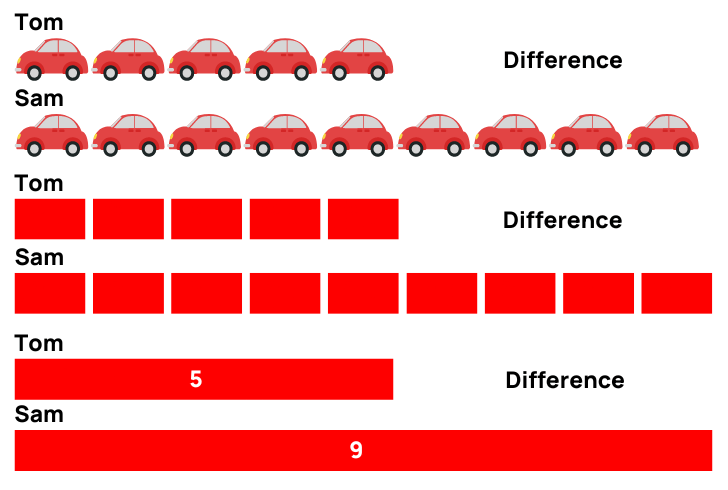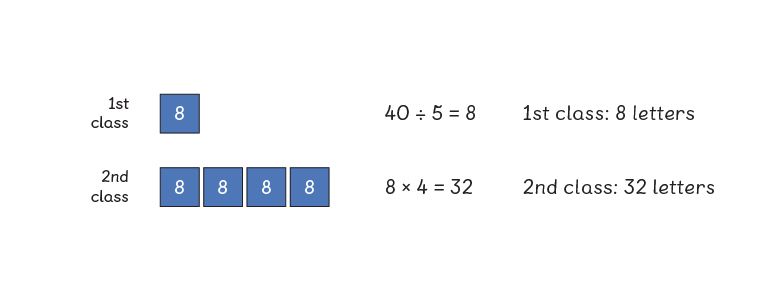Creative ways to teach fractions with bar model drawing techniques
Wiki Article
Unlocking the Power of Bar Version Drawing Techniques for Effective Problem Fixing in Math
Bar design drawing strategies provide an unique aesthetic method to mathematics that can enhance analytical abilities. By streamlining complicated partnerships and making abstract concepts much more accessible, these designs offer as powerful tools for learners. Nonetheless, the efficiency of bar designs depends greatly on correct execution. Recognizing the key concepts behind their use can result in significant enhancements in mathematical comprehension and communication. The question continues to be: just how can educators best integrate these strategies right into their teaching strategies?Comprehending Bar Designs: An Aesthetic Technique to Math
Although mathematics can typically seem tough and abstract, bar designs offer a visual technique that streamlines analytical and enhances understanding. These versions use rectangle-shaped bars to represent numbers and relationships, making mathematical concepts more tangible. By aesthetically segmenting amounts, bar versions permit students to much better grasp procedures such as enhancement, department, multiplication, and subtraction.When encountered with word issues, trainees can draw bars to represent different elements, helping in the visualization of partnerships between numbers. This technique not only helps in arranging information but also urges abstract thought. As an example, in a trouble entailing total quantities, bar versions can define wholes and components, clarifying the required calculations. As trainees exercise with bar models, they establish self-confidence in their mathematical abilities, allowing them to come close to complicated troubles with a structured way of thinking - bar model drawing techniques. Bar designs offer as a vital tool in the student's mathematical toolkit.
The Advantages of Using Bar Versions in Trouble Fixing
Bar models offer various advantages when it pertains to problem addressing in maths. They supply a visual depiction of numerical relationships, permitting students to conceptualize issues more efficiently. By translating words into bars, students can damage down complicated scenarios into workable parts, consequently facilitating a clearer understanding of the issue available.Furthermore, bar models promote important thinking and analytical abilities as trainees discover to manipulate the bars to locate services. This visual aid assists in determining patterns and connections among numbers, making abstract principles extra tangible. Moreover, bar models improve communication in maths, making it possible for students to articulate their thought options and processes plainly.

How to Develop Effective Bar Designs
Producing effective bar versions requires an organized approach that emphasizes clarity and accuracy. The primary step involves identifying the problem's key components, consisting of amounts and partnerships. Next, one need to pick suitable devices for depiction, making sure proportionality amongst the bars. This help in visualizing the partnerships more properly.After identifying the quantities, the version should be attracted, plainly labeling each bar to show its matching value. Using various shades can enhance understanding by identifying between different elements in the issue. It is additionally necessary to maintain constant spacing between bars, which assists protect against confusion.
When the version is constructed, confirming its accuracy via computations reinforces its efficiency. Exercising with a variety of problem types will certainly boost proficiency in creating bar versions. Inevitably, a well-designed bar version not just streamlines complex problems however additionally promotes much deeper understanding and problem-solving skills in mathematics.
Bar Designs in Activity: Real-Life Instances
When applied to real-life situations, bar designs can properly illustrate complicated partnerships and amounts, making them invaluable tools in different contexts. In budgeting, people can make use of bar versions to aesthetically contrast earnings and expenses, aiding in identifying surplus or deficit. In a grocery store purchasing situation, a bar design can stand for the expense of various products, allowing consumers to rapidly evaluate total spending and make educated decisions.In sporting activities, trains might utilize bar designs to evaluate player statistics, such as factors scored over a period, aiding to recognize efficiency trends. Additionally, in task administration, bar models can highlight job durations and source allowances, facilitating clearer interaction amongst staff member. These instances show exactly how bar models go beyond academic limits, providing quality in daily decision-making and enhancing understanding of quantitative relationships in numerous fields.
Integrating Bar Versions Into Classroom Learning
Incorporating bar designs into class learning can substantially improve trainees' ability to picture mathematical concepts. This technique not only aids individual understanding yet likewise cultivates collective understanding amongst peers. By collaborating to fix issues using bar versions, students can establish much deeper insights and strengthen their mathematical abilities.Picturing Mathematical Concepts
Bar designs offer as an effective device for picturing mathematical ideas in the classroom. By standing for numbers and partnerships via bars, pupils obtain a clearer understanding of abstract concepts such as addition, multiplication, department, and reduction. This visual aid streamlines intricate problems, allowing learners to break them into convenient components. Educators can effectively demonstrate connections between quantities, making it less complicated for pupils to grasp concepts like proportion, proportion, and fractions. Bar models also encourage independent analytical, as students can manipulate the visual representation to find services. Incorporating these models into lessons not only enhances pupil involvement yet likewise sustains different learning designs, guaranteeing that all students can access and comprehend mathematical web content better.Urging Collaborative Knowing
Joint understanding can be considerably enhanced via the usage of bar designs in the classroom. By incorporating these aesthetic devices, teachers can foster a setting where students participate in team analytical, leveraging each other's strengths. Bar designs assist in discussions, making it possible for students to verbalize their believed processes and thinking plainly. This graph urges diverse approaches to take on mathematical issues, promoting much deeper understanding. Trainees can compare their models, recognize inconsistencies, and collaboratively improve their remedies (bar model drawing techniques). Furthermore, working with each other with bar models grows vital abilities such as communication, essential thinking, and synergy. Overall, incorporating bar designs into collective learning not just enhances mathematical comprehension yet also develops a supportive class culture where pupils pick up from each other
Common Errors to Prevent When Making Use Of Bar Versions
They commonly run into specific pitfalls that can hinder their understanding of web link mathematical concepts when pupils involve with bar versions. One usual blunder is misstating the amounts involved. Students may attract bars of unequal sizes to stand for equivalent values, resulting in confusion. Additionally, failing to classify benches clearly can result in ambiguity concerning what each bar indicates. An additional regular error is neglecting the significance of scaling; students might neglect to preserve proportionality, influencing the analysis of connections between numbers.Additionally, some students might hurry via the analytical process, neglecting to assess the trouble prior to drawing the version. This can result in inaccurately organized bars that do not represent the problem's needs. Lastly, students occasionally focus solely on finishing the design without assessing the remedy, missing the possibility to strengthen their understanding of the underlying mathematical principles. Recognition of these errors can greatly improve the effectiveness of bar design strategies.
Encouraging Critical Believing Through Bar Design Techniques
In addition, bar designs promote discussion and cooperation among peers, as students share their remedies and analyses. This exchange of concepts grows a critical state of mind, enabling students to examine numerous approaches to a problem. Eventually, incorporating bar model techniques in mathematics education not only enhances analytical capacities yet also supports the vital reasoning abilities essential for scholastic success and real-world applications.Regularly Asked Inquiries
Can Bar Designs Be Used for Advanced Mathematical Concepts?
Bar designs can indeed be used for sophisticated mathematical ideas. They supply graph and simplify intricate troubles, assisting in recognizing partnerships and procedures. This method improves analytical skills across various levels of mathematical proficiency.What Age Group Advantages Most From Bar Model Techniques?
Youngsters aged 7 to 12 advantage most from bar design methods. This age group typically fights with abstract concepts, and bar designs offer visual assistance, boosting their understanding and analytical capabilities in maths.Exist Digital Equipment for Creating Bar Models?
Yes, there are numerous electronic tools readily available for developing bar models, consisting of software program like Google Drawings, Microsoft PowerPoint, and specialized academic apps created for picturing mathematical concepts via bar modeling strategies effectively.How Do Bar Versions Compare to Various Other Visual Aids?
Bar models supply a clear, structured depiction their explanation of mathematical connections, often supplying benefits over various other aesthetic help by simplifying complex troubles (bar model drawing techniques). Unlike pie graphes or charts, they improve understanding with direct comparison and symmetrical representationCan Prevent Designs Aid With Non-Mathematical Issue Addressing?
Bar versions can help with non-mathematical problem solving by aesthetically standing for elements and relationships, streamlining complex circumstances. Their organized method aids people evaluate troubles plainly, promoting far better decision-making and tactical reasoning in numerous contexts.As students method with bar versions, they establish confidence in their mathematical capabilities, permitting them to approach complex issues with an organized way of thinking. Furthermore, bar versions advertise crucial thinking and logical abilities as trainees learn to adjust the bars to find services. Furthermore, falling short to classify the bars plainly can result in uncertainty concerning what find out here now each bar symbolizes. Bar designs give a clear, organized representation of mathematical connections, commonly supplying benefits over other visual aids by simplifying complex problems. Bar models can aid with non-mathematical trouble solving by visually standing for parts and relationships, streamlining intricate scenarios.
Report this wiki page